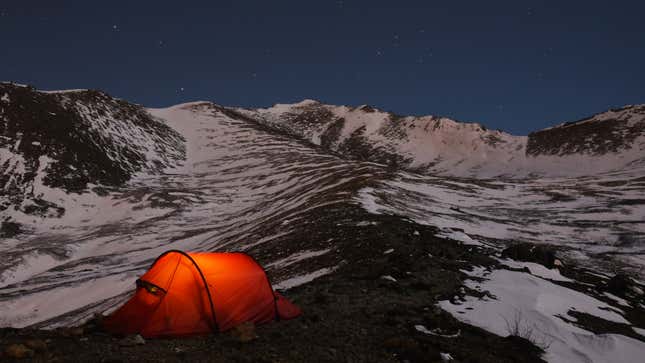
National parks may get all the prestige, but state parks do the heavy lifting when it comes to outdoor recreation in the U.S. They saw 807 million visitors in 2017, nearly two and a half times the number of national park visitors. All those people spent a combined 2 billion hours kayaking, camping, grilling, golfing, and otherwise recreating in state parks.
Despite the huge role state parks play in getting Americans outside and in touch with nature, the impact climate change will have on them has been relatively unstudied compared to their glory-hog national park counterparts. But a new study released Monday in the Proceedings of the National Academy of Sciences remedies that. The findings show that rising temperatures could drive up operating costs of state parks by up to 61 percent in the coming decades as the heat strains infrastructure and the spring and fall attract more visitors. The findings show that state parks will need to find new funding mechanisms to stay afloat in a hotter future.
“People are more likely to visit [state parks] on the weekend, not just once a year,” Jordan Smith, the director of Utah State’s Institute for Outdoor Recreation and Tourism, told Earther. “They’re much more regional and local and provide a huge benefit of quality of life to Americans.”
To understand how climate change could stress this key thread in the fabric of American life, Smith and his colleagues examined a dataset of state park visitation statistics, operating costs, and revenue at the nearly 8,300 state parks around the U.S. The data, collected by the National Association of State Park Directors since 1984, shows that state park visitation has rose 6.6 percent per year, and that that’s been the biggest driver in increasing operating costs. But temperature had a clear relationship as well and was the biggest driver of costs in Alaska, Florida, Louisiana, and Texas. Overall, the 34 years of record-keeping show that for every percent increase in mean annual temperature, yearly park operating costs rise by $11.51 per acre.
Using this relationship, the researchers then projected how costs could change under different climate scenarios out to 2050. Those scenarios ranged from one in which emissions fall dramatically to one in which the world goes wild ramping up the use of dirty fossil fuels, something we’re currently doing. Under the most extreme warming scenario, operating costs would rise from their current level of $432 per acre to $670.28 per acre. Even under the most moderate warming scenario, costs would rise to $581 per acre. In absolute dollars, that means it would cost up to $9 billion annually to operate state parks, a number that dwarfs the current National Park Service budget of roughly $2.4 billion.
In the climate scenarios, Smith and his colleagues assumed visitor numbers stayed flat at 2017 levels, an unlikely occurrence given the steady rise in visitors over the past three decades and the increasing length of the visitor season climate change affords. That means the actual operating costs could be even higher. In addition to increasing the number of park guests, climate change could also increase the cost of managing parks, particularly on the coasts and in cold environments.
“We see this in Gulf Coast where those state parks on the coast have to provide more management effort into mitigating those impacts whether it be cleaning out restrooms that are intermittently flooded by high tide events or making sites accessible after a hurricane,” Smith said, also noting adding storm surge protection could add another layer of operating costs. “We also see that in extremely northern latitudes where you get more freeze-thaw events. Those buildings and facilities have to be maintained more.”
The budgetary crisis means that states will need to find creative ways to keep funding their parks or risk a deterioration in service and conservation efforts. The paper suggests that state legislatures could help by allocating more resources to parks, which currently receive a paltry 0.16 percent of state budgets on average. Another option the paper raises is adding a state tax on outdoor gear that would help fund parks. The federal government has a tax on firearms and ammunition that helps fund state conservation programs that could serve as a model. Smith also pointed to other innovations, like peak pricing during busy times or seasons similar to congestion pricing for cars in big cities, as another avenue—or just increasing access fees across the board. Regardless of which mix of policies states choose, it’s clear that something has to happen.
In addition to providing recreational opportunities, state parks protect rare and endangered species. And in the hellscape that is our increasingly hot world, they can also give us humans a natural refuge for a few hours, too.